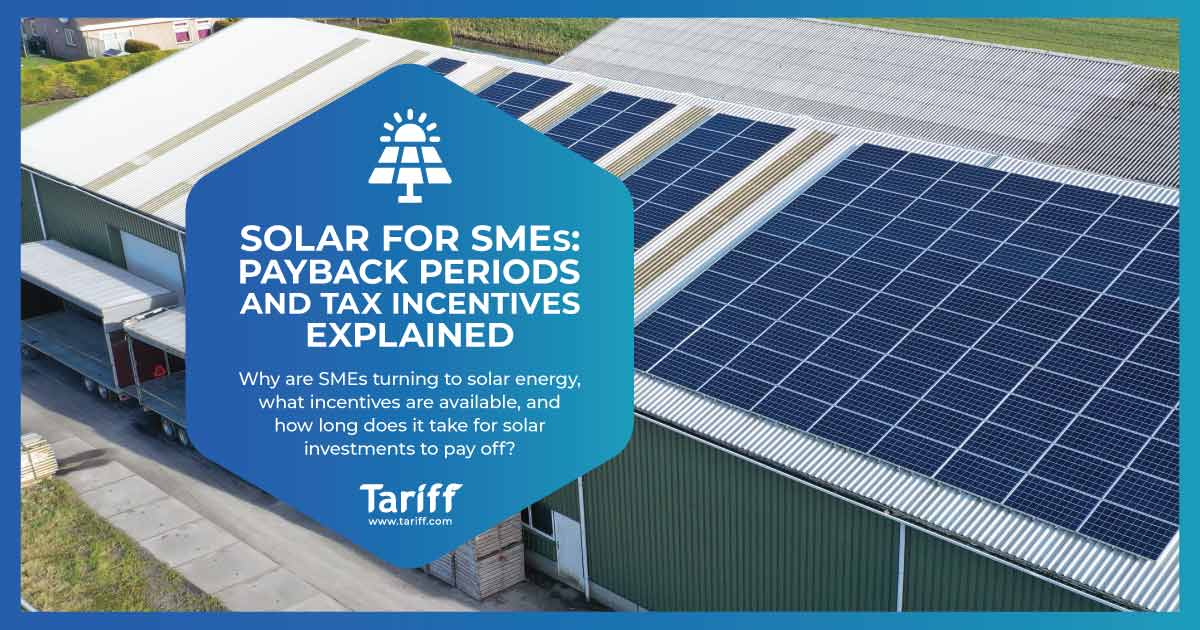Which UK Sectors use the most Energy?
If the climate crisis hadn’t been enough to encourage businesses to review their energy consumption, the unfolding energy crisis certainly has.
With utility bills hitting record highs, every sector has been forced to look differently at how, where, and when they deploy gas and electricity.
But which sectors of society use the most energy? In this blog, we’ll answer that question, and it’s a question that’s worth asking. After all, whether you operate a factory, manage a private office, oversee a warehouse, or run a small business, the financial and environmental incentives to optimise energy usage are significant.
Learning that you fall into a high-consumption sector could be the nudge needed to start taking more meaningful action. If nothing else, you may be alarmed by how much energy your business sector uses.
Whatever industry your organisation operates within, it is the way energy is used that determines the level of consumption, including how premises are heated and the energy efficiency of the premises themselves.
Top 10 Sectors That Use The Most Energy In The UK
Energy demand in the UK is changing fast. With new government data from the Digest of UK Energy Statistics (DUKES 2025), we can see how much energy the country’s main sectors consume, and how those patterns have shifted.
While total energy use increased slightly in 2024, consumption is still nearly 10% below pre-pandemic levels. Some industries are bouncing back, others are in long-term decline, and renewables are reshaping the way Britain is powered.
Here’s a breakdown of the 10 sectors that use the most energy in the UK:
1. Transport – 460,000,000 MWh

Transport remains the UK’s largest energy-consuming sector in 2025. Demand continues to grow as aviation recovers and road traffic increases, with cars, vans, and lorries leading the total. However, electrification is gathering pace, about 25% of new car sales are now battery electric.
Heavy goods vehicles pose a steeper challenge; despite emerging infrastructure like Milence’s fast-charging network, adoption lags due to limited range and high costs. Initiatives like Tesco’s plan to electrify its delivery fleet and integrate solar-powered refrigeration show the corporate sector taking the lead.
2. Domestic Households – 360,000,000 MWh
In 2025, UK households consumed about 360 million MWh, rebounds after the previous energy crisis. Heating remains the prime driver of demand. The launch of the Boiler Upgrade Scheme and removal of certain planning barriers resulted in a 54% spike in heat pump installation applications in the first half of 2025. Almost 100,000 heat pumps were installed in 2024, with a record-breaking quarter in early 2025.
While uptake is accelerating, widespread adoption remains limited: only 2% of owner-occupiers reported already having heat pumps, though awareness is rising.
3. Services – 310,000,000 MWh
The services sector, including offices, retail, education, and healthcare, used over 310 million MWh in 2025, reflecting a continued return to in-person operations. Forecasts expect a moderate growth trend of around 0.65% per year through 2028.
Organisations are improving efficiency through green tariffs, lighting upgrades, and smarter building management. PwC, for example, has cut its office energy use by about 62% and saved over £48 million through operational changes and tech upgrades.
4. Manufacturing (Metals, Steel & Chemicals) – 160,000,000 MWh

Energy use in heavy manufacturing has tumbled to around 160 million MWh, levels not seen in decades.
High energy costs and offshoring weigh heavily on sectors like steel and chemicals. Though schemes like the British Industry Supercharger provide support, industrial players still face a tough environment under high electricity prices.
5. Food & Drink Manufacturing – 110,000,000 MWh
This sector remains one of the most stable industrial energy users, largely due to refrigeration, processing, and heating needs.
Many businesses are responding by investing in electrification and heat recovery systems to keep up with both production and efficiency demands.
6. Construction – 90,000,000 MWh
Construction energy use reached approximately 90 million MWh in 2025. While diesel remains the default energy source, electric machinery, solar installations, and greener building methods are taking root, reflecting a gradual shift toward cleaner construction practices.
7. Agriculture & Fishing – 40,000,000 MWh
At around 40 million MWh, the agriculture and fishing sector’s energy use is led by machinery, refrigeration, and greenhouse heating. Sustainability initiatives like solar arrays, anaerobic digestion, and battery storage are helping farms reduce costs and emissions.
8. Public Administration & Defence – 35,000,000 MWh
Government buildings, hospitals, schools, and military facilities consumed about 35 million MWh. Efficiency efforts have helped stabilise demand. Still, there’s increasing pressure for public institutions to adopt renewable heating and electricity systems.
9. Mining & Quarrying (including Oil & Gas Extraction) – 30,000,000 MWh

Energy use in extraction industries continues its long-term decline, now around 30 million MWh. As the UK phases down fossil fuel production, this trend persists. Yet technologies like carbon capture and storage (CCS) may reshape the sector’s future role.
10. Water Supply & Waste Management – 25,000,000 MWh
Essential services like pumping, treatment, and recycling account for around 25 million MWh. Sustainability improvements, including biogas and waste-to-energy systems, are helping utilities offset energy demand.
The Picture Can Still Change
Although these are the UK’s top 10 energy-consuming sectors in 2025, the story isn’t fixed. The real opportunity lies in changing the sources of that energy.
With the energy crisis and climate emergency reshaping business priorities, energy efficiency is no longer optional, it’s vital. The falling cost of renewables makes switching suppliers easier than ever, while innovations such as hydropower, PyroCore technology, and next-generation heating systems are becoming more accessible.
Why Acting in 2025 Matters
Making energy-efficient choices today delivers more than just environmental wins, it’s a business decision that pays off immediately and over the long term. Here’s how:
1. Lower Energy Bills
Energy costs remain one of the biggest overheads for UK businesses. Even modest improvements in efficiency, such as upgrading insulation, replacing outdated equipment, or switching to a renewable tariff, can save thousands of pounds annually. In sectors with heavy energy use, these savings can be transformational, freeing up capital for reinvestment or innovation.
2. Stronger Green Credentials
Consumers and clients are increasingly scrutinising supply chains. Businesses that can demonstrate measurable progress toward sustainability stand out in tenders, attract eco-conscious customers, and build long-term brand loyalty. By acting now, companies can position themselves as leaders in their sector, rather than playing catch-up.
3. Compliance with Regulations
UK legislation is tightening as the government pursues net-zero by 2050. From carbon reporting requirements to minimum efficiency standards, regulations are only moving in one direction.
By taking proactive steps in 2025, businesses can avoid the disruption and financial penalties that often come with late compliance. Early adopters also tend to benefit from grants, incentives, and support schemes.
4. Operational Resilience
Relying on fossil fuels ties businesses to volatile global energy markets. By diversifying into renewables or investing in efficiency technologies, companies reduce exposure to price spikes and supply disruptions.
This resilience not only stabilises operations but also provides a competitive edge in uncertain times.
5. Employee and Stakeholder Engagement
Employees, investors, and stakeholders increasingly expect businesses to align with sustainability goals. Companies that show a genuine commitment to reducing their energy use often see a boost in morale, improved recruitment, and greater investor confidence. It signals a forward-thinking, responsible organisation.
Whether you’re in transport, manufacturing, or services, the message is clear: energy efficiency is now a competitive necessity as well as an environmental one. By acting in 2025, businesses can protect their bottom line while contributing to a more sustainable UK economy.




